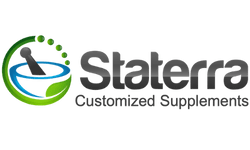According to the World Health Organization (WHO), 80% of the world’s population relies on herbs for a substantial part of their health care – be it for boosting the immune system, treating depression, or promoting relaxation. This percentage isn’t all that surprising, considering the shift that has taken place over the past few years with individuals looking for a more natural, healthy, and sustainable option to their health care, as well as in all other elements of their day-to-day life.
The problem that exists, however, is that with this new shift people are so eager to cure or control various disorders with herbs, teas, megadoses of vitamins, and various other natural products, that they don’t always know what or how much of one thing they are taking. With this comes the lack of knowledge in the role these items have in the body, possible interactions, and consequences of taking too much (because you can ALWAYS get too much of a good thing). Although much information is available on dietary supplements and herbal therapy (be it through advertisements, books magazines or internet sites), obtaining the correct information can be difficult and the potential for misinformation abounds.
Because herbs and vitamins are “natural products,” many individuals incorrectly assume that they are without adverse effects. When any herbal remedy or dietary supplement is used, the dosing is extremely important. For example, Niacin (B3) is most often touted for lowering LDL cholesterol (the bad kind), protecting against cardiovascular disease and boosting HDL cholesterol (the good kind). Like all B vitamins it is essential for fueling the body, helping it convert food (carbohydrates) into fuel (glucose), which is burned to produce energy. Excessive amounts of Niacin, however, can contribute to liver damage. The same goes for Comfrey, a herb that was once widely used to promote digestion. It is now known to cause liver damage and is not recommended for use as a supplement. Because many of these natural substances have strong pharmalogic activity, tolerable upper limits (UL) have been established by Health Canada for many vitamins, minerals, and nutraceuticals.
So do your homework, use a reliable company that has education in what they are talking about, and ALWAYS follow dosing directions. Never take more than the recommended dose and, if anything, start with a partial dose (1/4 – 1/2 the recommended dose) and work your way up once you know how you respond. It’s also beneficial to start a supplement regimen with a goal in mind – this will allow you to research and determine which supplement is best for you.
